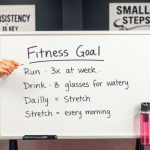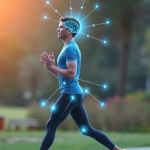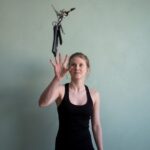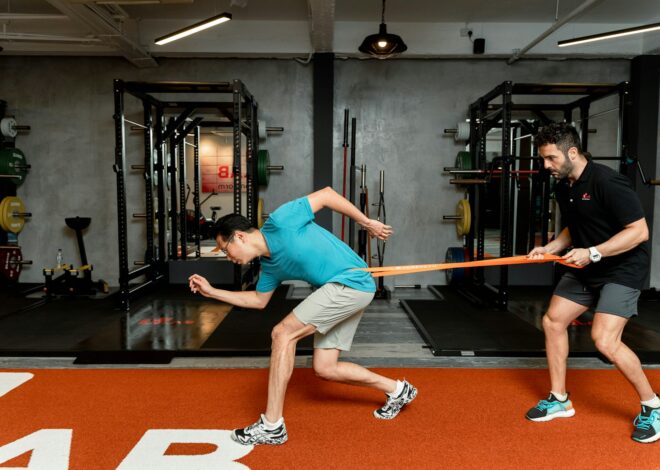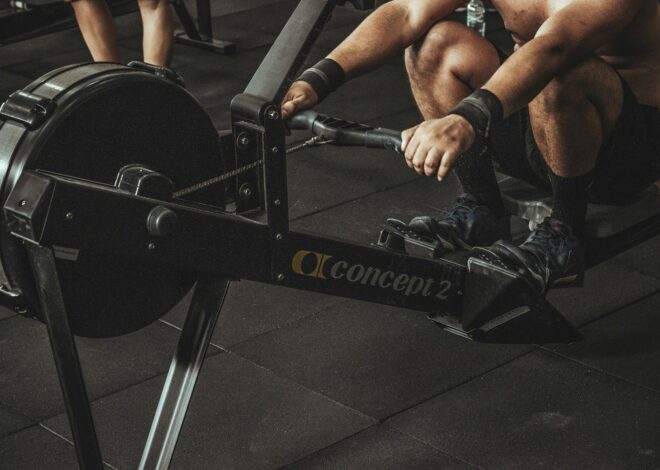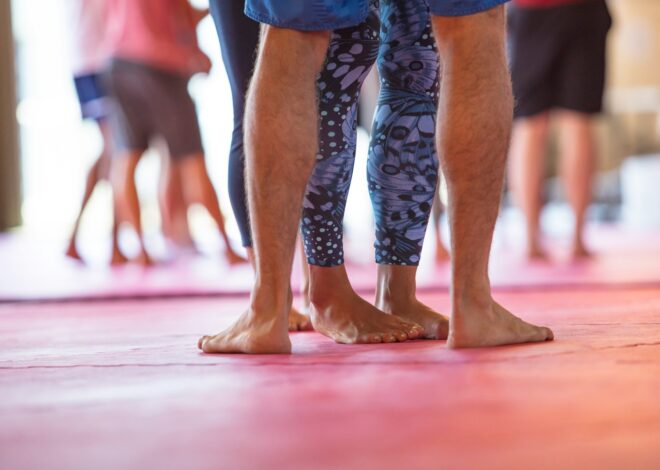
The Power of Visualization: How It Can Improve Your Workout Performance
Benefits of Visualization in Exercise

Visualization in exercise can significantly enhance performance and results by harnessing the power of the mind. By creating vivid mental images of successfully completing movements and exercises, individuals can improve their focus, technique, and overall physical capabilities. This mental practice aids in developing muscle memory, leading to more efficient and precise movements during actual physical activity.
Moreover, visualization in exercise has been shown to boost confidence and motivation. When individuals visualize themselves achieving their fitness goals or conquering challenging workouts, it instills a sense of belief in their abilities and strengthens their determination to succeed. This heightened confidence can translate into improved performance, increased resilience, and a greater likelihood of pushing through obstacles during training sessions.
Understanding the Mind-Body Connection

The mind-body connection refers to the intricate relationship between our thoughts, emotions, and physical well-being. This connection highlights how our mental state can impact our physical health and performance, and vice versa. When we understand and actively nurture this relationship, we can harness its power to enhance various aspects of our lives, including exercise and fitness.
By recognizing the interconnectedness of our mind and body, we can cultivate a holistic approach to our well-being. Engaging in physical activities with a mindful awareness of our thoughts and emotions can lead to improved focus, motivation, and overall performance. By developing this awareness, we can optimize our exercise routines, reduce stress, and achieve greater balance in both our mental and physical health.
Enhancing Focus and Concentration

Visualization is a powerful tool that can help enhance focus and concentration during exercise. By mentally rehearsing movements and techniques, individuals can improve their ability to concentrate on the task at hand without distractions. This mental practice can train the mind to stay present and fully engaged in the workout, leading to better performance and results.
Moreover, incorporating visualization techniques into your routine can help sharpen your focus by creating a clear picture of your goals and desired outcomes. By visualizing yourself successfully completing exercises or reaching fitness milestones, you can strengthen your mental resilience and determination. This heightened focus and concentration can translate into improved performance during workouts, ultimately helping you achieve your fitness objectives more effectively.
Boosting Confidence and Motivation

Visualization is a powerful tool for boosting confidence and motivation in exercise. By mentally rehearsing successful workouts and envisioning yourself reaching your fitness goals, you can build a strong sense of self-belief and determination. Visualizing yourself overcoming obstacles and pushing through challenges can help you stay motivated and committed to your exercise routine.
When you visualize yourself achieving success in your workouts, you create a positive mindset that fuels your confidence and motivation. Seeing yourself making progress and reaching milestones in your mind can translate to increased drive and enthusiasm during actual physical activity. By harnessing the power of visualization, you can cultivate a deep sense of belief in your abilities and stay motivated to push yourself further in your fitness journey.
Improving Muscle Memory

Muscle memory, a crucial component of physical performance, can be enhanced through the use of visualization techniques. By mentally rehearsing specific movements and exercises, individuals can strengthen the neural pathways associated with these actions. As the brain struggles to differentiate between the real and the imagined, consistent visualization can effectively “program” the muscles to execute movements with greater precision and efficiency.
Moreover, incorporating visualization into one’s training regimen can lead to improved coordination and technique. By vividly picturing each step of a movement or exercise in the mind’s eye, athletes and fitness enthusiasts alike can fine-tune their motor skills and optimize their biomechanics. This heightened focus on proper form and execution can contribute to achieving peak performance and reducing the risk of injury during physical activity.
• Visualization techniques can enhance muscle memory
• Mentally rehearsing movements strengthens neural pathways
• Consistent visualization “programs” muscles for precision and efficiency
• Improved coordination and technique result from incorporating visualization into training
• Vividly picturing each step fine-tunes motor skills and optimizes biomechanics
• Heightened focus on form reduces risk of injury and enhances performance
Setting and Achieving Goals

Setting and achieving goals is a crucial aspect of any successful exercise routine. By establishing clear and realistic objectives, individuals can stay motivated and focused on their progress. Setting specific goals, whether it be increasing the number of repetitions, improving endurance, or mastering a new exercise technique, provides a sense of direction and purpose to one’s workouts.
Moreover, achieving these goals can lead to a sense of accomplishment and satisfaction, further fueling one’s motivation to push themselves further. It is important to break down larger goals into smaller, manageable steps to maintain momentum and track progress effectively. By regularly reassessing and adjusting goals as needed, individuals can continue to challenge themselves and strive for continuous improvement in their fitness journey.
Reducing Anxiety and Stress

Visualization is a powerful tool that can aid in reducing anxiety and stress related to exercise. By creating mental images of successful workouts and envisioning oneself handling challenging situations with ease, individuals can effectively calm their nerves and boost their confidence. This practice helps in shifting the focus from potential stressors to positive outcomes, allowing for a more relaxed and composed mindset before, during, and after physical activities.
Moreover, incorporating visualization techniques into one’s routine can provide a sense of control and mastery over their exercise performance, leading to a decrease in anxiety levels. By visualizing specific movements and exercises in detail, individuals can enhance their muscle memory and overall coordination, which in turn can reduce the feelings of stress and uncertainty. Through regular practice of visualizing successful outcomes and implementing guided imagery, individuals can better manage their anxiety and approach their workouts with a clear and focused mind.
Enhancing Coordination and Technique

Visualizing specific movements and exercises can greatly enhance coordination and technique during physical activity. By mentally rehearsing the precise execution of each movement, individuals can improve their muscle memory and motor skills, leading to more fluid and efficient performance. This mental practice allows athletes and fitness enthusiasts to focus on perfecting their form and mastering the intricacies of complex movements without physically exerting themselves.
Incorporating visualization into training routines can fine-tune coordination and technique by enhancing neuromuscular connections and neural pathways. By mentally visualizing the correct sequence of movements, individuals can strengthen the mind-body connection and improve their ability to execute movements with precision and efficiency. This mental imagery not only aids in refining technique but also boosts confidence and optimizes performance during physical activities.
Increasing Endurance and Stamina

Visualization techniques can play a crucial role in enhancing endurance and stamina during physical activity. By visualizing yourself pushing through fatigue and sustaining your performance, you are conditioning your mind to support your body’s endurance. Creating mental images of yourself crossing the finish line strong and full of energy can help you maintain a high level of motivation and perseverance throughout your exercise routine.
Consistently practicing visualization techniques can train your mind to stay focused and composed, allowing you to push past mental barriers that may hinder your endurance. Visualizing yourself maintaining a steady pace, breathing rhythmically, and feeling strong can contribute to increasing your stamina during challenging workouts. Integrating visualization into your training regimen can bridge the gap between mental and physical performance, ultimately leading to improved endurance and stamina levels.
Enhancing Mental Toughness

Visualization is a powerful tool that can help individuals enhance their mental toughness. By creating vivid mental images of themselves overcoming challenges and obstacles, they can strengthen their resilience and perseverance. Through visualization, athletes can mentally prepare themselves to push through adversity and stay focused on their goals, even in the face of difficulty.
Additionally, visualizing success in high-pressure situations can help individuals build their confidence and self-belief. By picturing themselves performing at their best and achieving their desired outcomes, they can develop a strong mindset that enables them to stay calm and composed under stress. This mental toughness cultivated through visualization can be a valuable asset in overcoming setbacks and achieving peak performance.
Improving Recovery and Injury Prevention

Visualization can play a crucial role in improving recovery and preventing injuries in physical activity. By mentally rehearsing proper form and technique, individuals can strengthen their mind-body connection, leading to more efficient movements and reduced risk of strains or sprains. Visualizing the body going through a recovery process can also help speed up healing by promoting relaxation and reducing stress on injured areas.
In addition, utilizing visualization techniques to imagine oneself engaging in safe and effective exercise routines can enhance overall performance while minimizing the chances of overexertion or incorrect movements that could lead to muscle strains or other injuries. By picturing successful and injury-free workouts, individuals can instill confidence in their abilities and reinforce positive habits that contribute to long-term physical well-being.
Utilizing Visualization Techniques

Visualization techniques involve creating detailed mental images of yourself successfully performing exercises or achieving fitness goals. By vividly imagining each movement, muscle engagement, and desired outcome, you are essentially training your brain to enhance physical performance. This mental rehearsal can help improve technique, form, and coordination by reinforcing neural pathways associated with specific movements.
Incorporating visualization into your exercise routine can also help increase motivation and confidence. By visualizing yourself overcoming challenges and reaching milestones, you are creating a positive mindset that can drive you towards success. Through consistent practice of visualization techniques, you can program your mind to stay focused, motivated, and resilient during your workouts, ultimately enhancing your overall performance and results.
Incorporating Visualization into Your Routine

Visualization can be a powerful tool to enhance your exercise routine. By incorporating visualization into your daily workout regimen, you can mentally rehearse your movements and routines before physically executing them. This can help improve your muscle memory, coordination, and technique, leading to more effective and efficient workouts.
To effectively incorporate visualization into your routine, find a quiet and comfortable space where you can focus without distractions. Close your eyes and vividly imagine yourself going through your workout, visualizing every detail from start to finish. Engage all your senses in the visualization process, feeling the movements in your body, hearing the sounds of the gym or nature around you, and even smelling the scents associated with exercise. By consistently practicing visualization before each workout, you can optimize your performance and achieve your fitness goals more effectively.
Creating Mental Images of Success

Visualizing success can be a powerful tool in achieving your fitness goals. When you create clear mental images of yourself succeeding in your workouts or reaching your desired outcomes, you are essentially priming your mind for success. By vividly imagining yourself performing at your best, you are reinforcing positive neural pathways that can enhance your performance in real life.
Moreover, by regularly visualizing yourself overcoming challenges and achieving your goals, you are strengthening your belief in your abilities. This increased confidence can translate into increased motivation and determination to push through obstacles and stay committed to your fitness journey. Embracing the practice of creating mental images of success can help you stay focused on your goals and maintain a positive mindset throughout your fitness endeavors.
Practicing Visualization Regularly

Visualization is a skill that improves with regular practice. By setting aside dedicated time each day to visualize your workout, you can enhance your mental focus and strengthen the mind-body connection. Consistent practice of visualization techniques can help ingrain proper form and technique into your muscle memory, leading to improved coordination and efficiency during actual physical activity.
Combining Visualization with Physical Practice

One effective way to maximize the benefits of visualization is to combine it with physical practice. This powerful combination involves mentally rehearsing movements, techniques, or exercises before actually performing them physically. By mentally going through the motions, individuals can enhance muscle memory and fine-tune their coordination and technique. This can lead to improved performance and efficiency when executing the physical activity.
Moreover, integrating visualization with physical practice can help individuals monitor their progress and results more effectively. By visualizing specific movements and exercises beforehand, individuals can set clear goals and track improvements over time. This can be particularly useful for athletes looking to enhance their skills or individuals aiming to achieve specific fitness milestones. By incorporating visualization into their regular training routine, individuals can unlock their full potential and optimize their physical performance.
Utilizing Guided Imagery

Guided imagery is a powerful tool that many athletes and individuals use to enhance their performance and achieve their goals. By engaging in guided imagery sessions, individuals can create vivid mental images of success, visualize themselves overcoming challenges, and improve their overall mindset. This technique involves focusing on specific scenarios or outcomes while incorporating all senses to make the visualization experience as real and detailed as possible.
Professional athletes often work with sports psychologists or visualization experts to fine-tune their guided imagery practice and optimize its benefits. Through guided imagery, individuals can effectively program their minds for success, improve their confidence, and develop a winning mentality. By incorporating guided imagery into their routine, athletes can strengthen their mental toughness, increase their focus and concentration, and ultimately perform at their best when it counts the most.
Visualizing Specific Movements and Exercises

Visualization of specific movements and exercises involves mentally rehearsing the details of each action in a focused manner. By vividly imagining yourself performing the movements with precision and fluidity, you can improve your muscle memory and enhance your overall performance. Whether it’s perfecting your squat form, mastering a tennis serve, or executing a yoga sequence flawlessly, visualizing the specific nuances of each movement can help ingrain correct technique and boost your confidence.
Furthermore, visualizing specific movements and exercises can aid in understanding the mechanics and sequences involved in complex actions. By mentally breaking down each component of a movement and visualizing the transitions between different steps, you can strengthen your mind-body connection and improve your coordination. This focused visualization technique can be especially beneficial for athletes, dancers, or individuals looking to refine their technique and enhance their overall performance in their respective activities.
Monitoring Progress and Results

Tracking your progress and observing the results of your visualization practice are essential aspects of ensuring its effectiveness. By keeping a detailed record of your performance, you can identify patterns, improvements, and areas that may require further attention. This proactive approach allows you to make necessary adjustments to optimize your visualization techniques for better outcomes.
Regularly assessing your progress also serves as a source of motivation and encouragement. Seeing tangible evidence of your growth can instill a sense of accomplishment and fuel your determination to continue honing your mental skills. Whether it’s through journaling, reflection, or self-assessment, monitoring your progress provides valuable insights that contribute to the overall success of your visualization journey.
Seeking Professional Guidance and Support

For those looking to delve deeper into the realm of visualization in exercise, seeking professional guidance and support can be a valuable resource. Professional guidance offers personalized insights and tailored strategies to help individuals maximize the benefits of visualization techniques. Whether working with a sports psychologist, a fitness coach, or a specialized visualization expert, seeking professional support can enhance the effectiveness of your visualization practice.
Professional guidance can also provide accountability and structure to your visualization routine. With the guidance of an expert, individuals can create specific goals and action plans to integrate visualization seamlessly into their exercise regimen. Additionally, professional support can offer feedback and adjustments to ensure that visualization techniques are aligned with personal objectives and performance targets.




